The latest works 25
since March 22, 2007
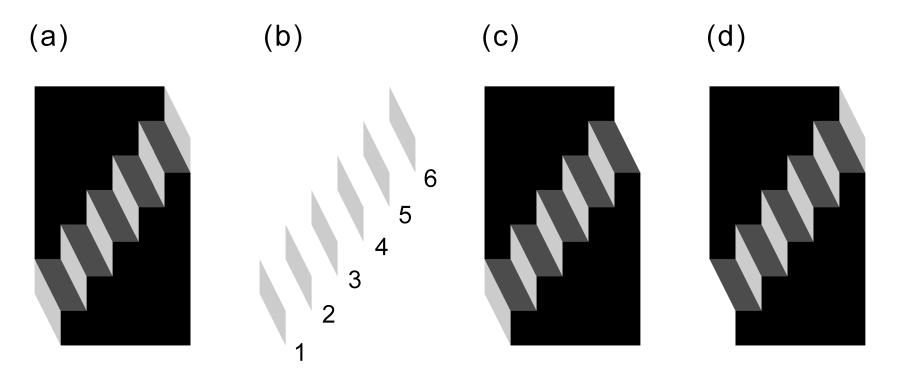
"Size illusion of the Schröder's staircase"
The Schröder's staircase is one of the famous, classic reversible figures. The original figure is a line drawing image, as shown below. I have reproduced this staircase as a painting image, as shown in Panel (a). The appearance is sometimes flipped over between Panel (c) (the lower-right black part appears to be in front) and Panel (d) (the upper-left black part appears to be in front). There are six light-gray parallelogram and five dark-gray ones. Among the light-gray parallelograms, the sizes are the same as each other (Panel (b)). Yet, parallelograms 1 and 6 appear to be smaller than the rest. The degree of the illusory shrinkage depends on the appearance of the staircase. Parallelograms 1 appears to be smaller than parallelogram 6 when the appearance is like Panel (d), while Parallelograms 6 appears to be smaller than parallelogram 1 when the appearance is like Panel (c).
Copyright Akiyoshi Kitaoka 2007 (June 3)
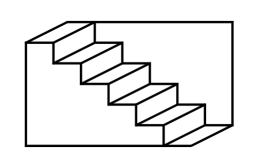
Schröder's staircase
Note: The object with low contrast appears to be smaller than the one with high contrast (Oyama and Nanri, 1960). For example, when yellow and blue squares are the same in size, the blue square appears to be smaller than the yellow one in the black background, while the yellow square appears to be smaller in the white background.
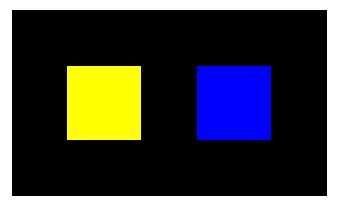
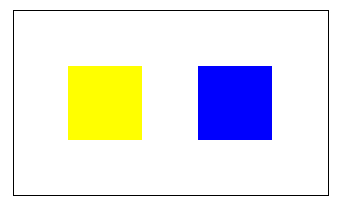
Oyama, T. and Nanri, R. (1960) The effects of hue and brightness on the size perception. Japanese Psychological Research, 2, 13-20.
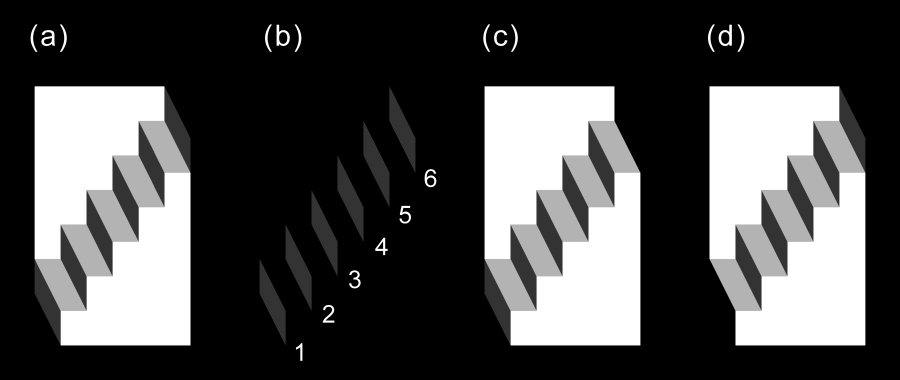
Light-dark reversal gives the same result
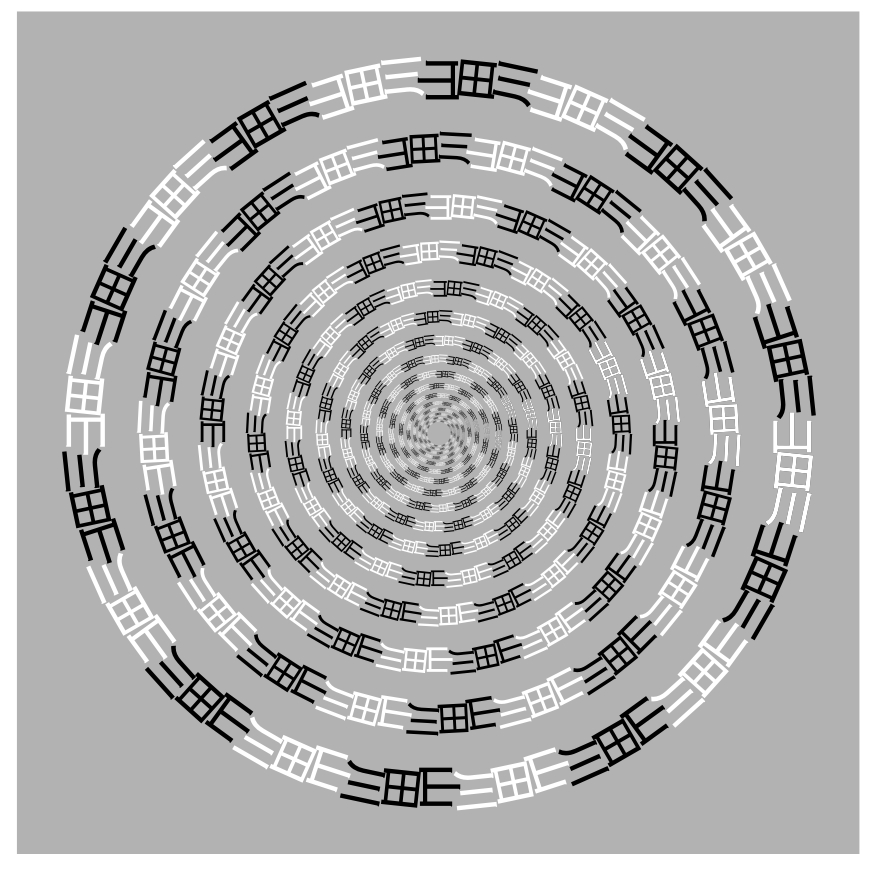
"Yamadagawa spiral"
Concentric circles of Chinese characters "Yamadagawa" gives a spiral appearance. This idea was first proposed by Dr. Makoto Ichikawa, Chiba University, Chiba, Japan.
Copyright Akiyoshi Kitaoka 2007 (May 30)
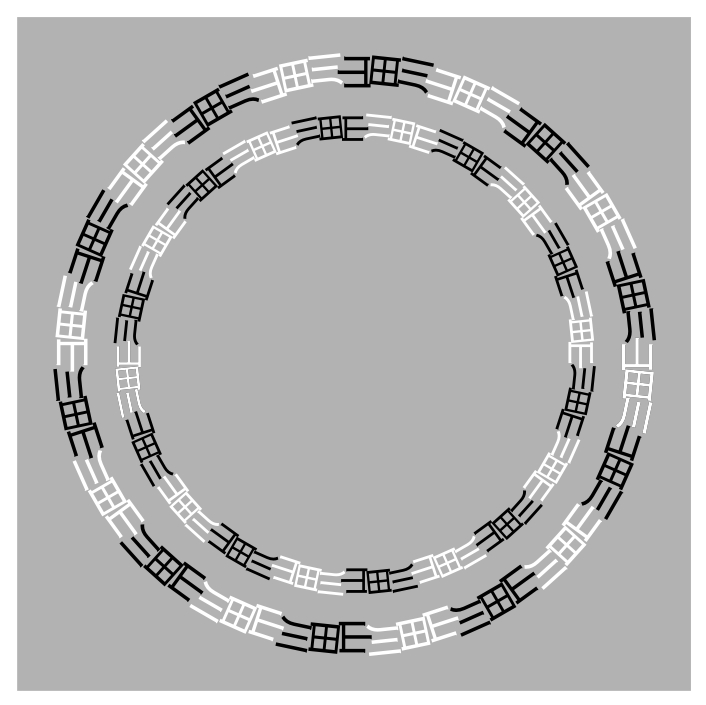
"Yamadagawa spiral 2"
Concentric circles of Chinese characters "Yamadagawa" gives a distorted appearance.
Copyright Akiyoshi Kitaoka 2007 (May 30)
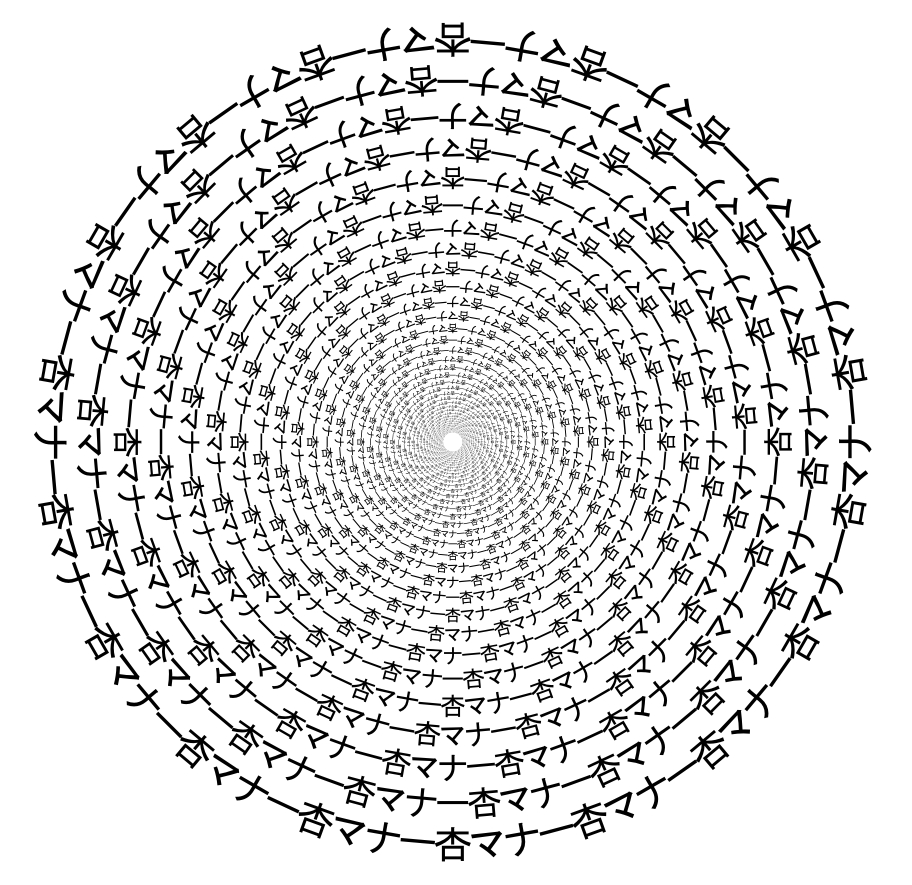
"Anzumanaa spiral"
Concentric circles of a Chinese character and Katakana letters "Anzumanaa" gives a spiral appearance. This idea was first proposed by Dr. Makoto Ichikawa, Chiba University, Chiba, Japan.
Copyright Akiyoshi Kitaoka 2007 (May 30)
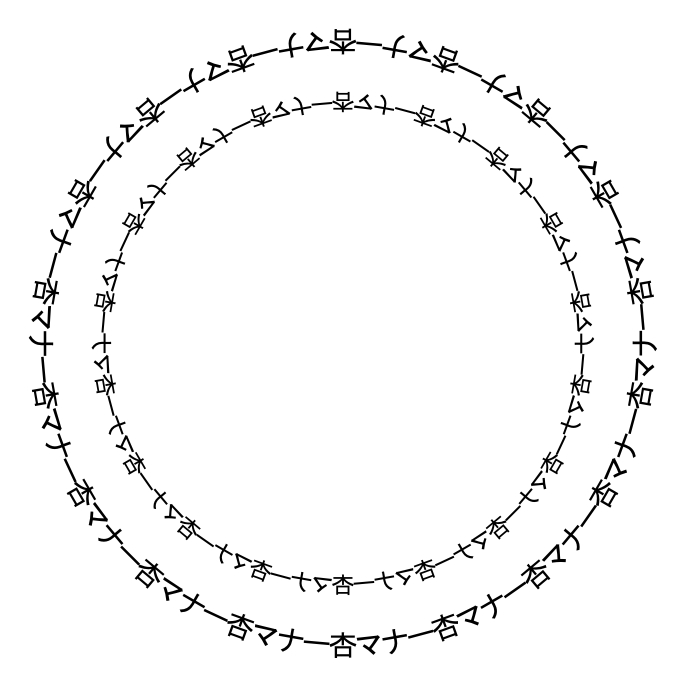
"Yamadagawa spiral 2"
Concentric circles of a Chinese character and Katakana letters "Anzumanaa" gives a distorted appearance.
Copyright Akiyoshi Kitaoka 2007 (May 30)
"Size-dependent sight-direction illusion"
When this image is large enough, the girl appears to see a slightly lower place whereas when this image is small, she appears to look in front.
Copyright Akiyoshi .Kitaoka 2007 (May 3)
Putting on and taking off glasses give the same effect. cf. Hybrid Images by Oliva (MIT)
Thanks to Sohei
"Zig-zag worms"
The top and the third rows appear to move rightward while the rest appear to slide leftward.
Copyright Akiyoshi .Kitaoka 2007 (April 16)
"Color worms"
Blocks of color rectangles appear to move laterally, in which the top, middle and bottom blocks appear to move leftward while the rest appear to slide rightward (the optimized Fraser-Wilcox illusion, Type III according to my classification). For those who wear concave glasses (myopia or nearsightedness), when this image is observed through the upper part of the lenses, the top, middle and bottom blocks appear to tilt counterclockwise while the rest clockwise. When this image is observed through the lower part of the lenses, the apparent tilts are reversed. For those who wear convex glasses (farsightedness), all the appearances are reversed (I guess). I imagine that this tilt illusion depends on the illusion of smoothly shifted edges (Kitaoka, 2007, Figure 27) or the Montalvo illusion (Lavatory Wall illusion) , which is caused by lightness modification at the borders, which is generated by apparent positional shifts due to chromatic abberation through prism lenses.
Copyright Akiyoshi .Kitaoka 2007 (April 12)

Illusion of smoothly shifted edges. The horizontal row of white and black rectangles appears to tilt clockwise.
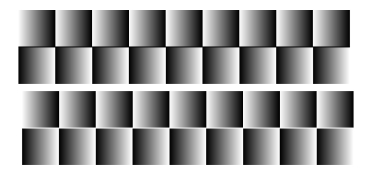
Montalvo illusion. The black line appears to tilt counterclockwise in the upper image while
the white one clockwise in the lower image, though the square patterns
are identical between the upper and lower images.
References
Kitaoka, A. (2007) Tilt illusions after Oyama (1960): A review. Japanese Psychological Research, 49, 7-19. PDF request to me new!
Kitaoka, A., Pinna, B., and Brelstaff, G. (2004). Contrast polarities determine the direction of Café Wall tilts. Perception, 33, 11-20. PDF request to me.
Woodhouse J M, Taylor S P, 1987 ``Further studies of the Café Wall and Hollow Squares illusions'' Perception 16 467-471
Sakane I, 1980 Shin AsobinoHakubutsushi (A NewMuseum-of-Fun Book), Part II (Tokyo: Asahibunko) pp 156-165 (in Japanese)
"Waterway spirals"
Something appears to flow in the spiral waterways. This illusion (Leviant, 1996) is called Enigma illusion or simply Enigma. Here I propose to call the effect "Leviant illusion".
Copyright Akiyoshi .Kitaoka 2007 (April 10)
Leviant, I. 1996 Does `brain-power' make Enigma spin? Proc. R. Soc. Lond. B263, 997-1001.
"Rotating sakura 2007"*
*Sakura = cherry blossom
Disks appear to rotate.
Copyright Akiyoshi .Kitaoka 2007 (March 22)
"Rotating menko"*
*Menko = kind of game card
Disks appear to rotate.
Copyright Akiyoshi .Kitaoka 2007 (March 22)
24 The latest works (March 2007 - March 2007)
23 The latest works (February 2007 - March 2007)
22 The latest works (December 2006 - January 2007
21 The latest works (October 2006 - November 2006)
20 The latest works (August 2006 - October 2006)
19 The latest works (July 2006 - August 2006)
18 The latest works (June 2006 - July 2006)
17 The latest works (May 2006 - June 2006)
16 The latest works (May 2006 - May 2006)
15 The latest works (April 2006 - May 2006)
14 The latest works (March 2006 - April 2006)
13 The latest works (March 2006 - March 2006)
12 The latest works (February 2006 - February 2006)
11 The latest works (February 2006 - February 2006)
10 The latest works (January 2006 - February 2006)
9 The latest works (November 2005 - December 2005)
8 The latest works (October 2005 - October 2005)
7 The latest works (September 2005 - October 2005)
6 The latest works (June 2005 - August 2005)
5 The latest works (April 2005 - June 2005)
4 The latest works (March 2005 - April 2005)
3 The latest works (June 2004 - March 2005)
2 The latest works (April 2004 - June 2004)
1 The latest works (August 2003 - May 2004)
0 The latest works (June 2002 - July 2003)